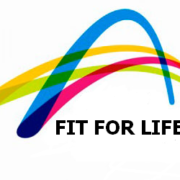NEW 90-AND-OVER AGE CATEGORY TO BE INTRODUCED ON ITF SENIORS TOUR IN 2021
The ITF has announced that a new 90-and-over age category will be introduced on the ITF Seniors Tour in 2021.
The news follows the announcement earlier that a 30-and-over age category is also to be introduced next year, with the ITF committed to making improvements at both ends of the age spectrum on the Seniors Tour. The ITF’s mission is to make seniors tennis the leading sport
Today’s announcement means that players aged 90 and over will be able to compete exclusively against one another at events which offer the new category in 2021 – rather than playing against players in their mid-80s, with players in their 90s currently competing in the 85-and-over age categories.
In 2021, a total of 81 registered players on the ITF Seniors Tour will be aged 90 or over (compared to 51 players in 2020). This number is forecast to further grow in the years to come.
The ITF Seniors Tour features more than 500 tournaments a year, played in over 70 nations across six continents. The events range from tournaments held at small clubs attended mainly by local players to the ITF World Championships, which see hundreds of players travel from all over the world. The Seniors Tour is characterised not only by the high level of competition, but also by a warm and welcoming atmosphere, which sustains friendships made through tennis over many years.
Among the highlights of the seniors calendar are undoubtedly the Team and Individual World Championships, and it was with great regret that the ITF was forced to cancel these events in 2020 due to Covid-19 pandemic.
Next year, the ITF Super Seniors World Championships, due to be held in Mallorca, Spain, will feature a 90-and-over category in the individual championships for the first time.
Today’s news will be well-received by the likes of Leonid Stanislavskyi, a 96-year-old player from Ukraine, who will now no longer have to compete against players aged a decade younger – although Stanislavskyi, a formidable character, has more than held his own against younger opposition at events he has contested in the last few years.
“Tennis is a wonderful sport that allows you to play at any age, it gives you physical training that you can enjoy and it can extend your life,” Stanislavskyi said at the ITF Super Seniors World Championships last year. “Tennis for me is a gift I can’t live without. Tennis is life.”
Matt Byford, Manager of Juniors and Seniors Tennis at the ITF, said: “We have been thrilled to see more and more players competing in the 85-and-over age category each year, many of whom are now aged over 90. Offering this new age category will help provide more appropriate competitive opportunities for players in their 90s, and we hope it will encourage and motivate more players to continue playing throughout the 85-and-over category and play in the 90-and-over category in the future.
“Tennis is a great sport for keeping fit and healthy, as proved by the fact that there will be a global tour for tennis players in their 90s from next year. The ITF Seniors Tour allows players to combine this with competitive play, to travel to and visit new places, and to make and sustain friendships through sport.”




